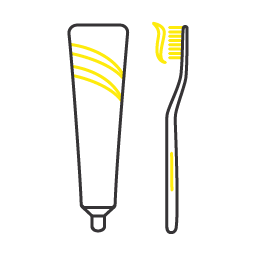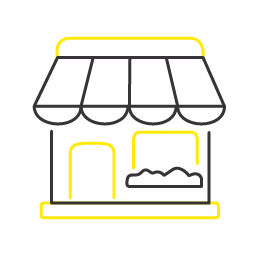Is your business ready for the biggest sales of the year? If you play in the B2C ecommerce/retail space and are planning your marketing strategy for the run-up to the festive season, here’s what you need to know.
It’s no surprise that Black Friday and Cyber Monday are huge for brands. It’s the perfect time to launch new products and drive traffic to your website. They are also a great opportunity to get creative with your marketing strategies by thinking outside of the box.
Thanks to the global pandemic, there’s been a significant increase in online shopping in recent years and Black Friday and Cyber Monday are growing in popularity. We’re also seeing Christmas shoppers starting much earlier, looking for discounted presents to add to Santa’s sack.
Since this is a long one, we’ve got some quick links to help you jump to the sections most relevant for you:
- Social media
- Targeted emails
- Retargeting ads
- Preparing your website
- Tailored landing pages
- Product descriptions
- Search engine optimisation
- Cross-selling
use your social media platforms to spread the word
Create social media posts about your special deals and encourage customers to get excited about them. Social media can be a great free [or paid] tool for you to engage with a wide audience and get the word out there!
Use videos—especially short videos!
Videos on social media platforms are extremely popular right now because people find them more engaging. Adding video content will increase your reach and ensure your content is being seen. If you have produced a longer video [over 1 minute], make sure you repurpose that video and create shorter snippets [15-30 seconds] with shorter calls-to-action too!
Use hashtags
Hashtags are an easy way to gather posts related to a specific topic in one place. They also allow people to easily filter through similar content, to avoid sifting through hundreds of irrelevant posts just trying to find relevant ones. For example, by adding #BlackFriday or #CyberMonday in your posts, people can see what’s trending and engage with their own commentary on it as well!
Use emojis
Emojis are fun little symbols that add some personality to your posts and are proven to help increase engagement. Which one would you personally prefer?
- “Get ready for our Black Friday sale by checking out these deals”
- “📢 Get ready for our Black Friday sale by checking out these deals 🤑”
The second option is eye-catching, ✨fun✨ and adds relatability to your posts!
The best part about organic social posts is that they’re free — but with so much competition during this period, your posts might not get seen. If you have a marketing budget to work with, you should consider boosting posts or running ads on the social media platform/s most relevant to your audience to ensure you are getting a much larger reach [especially since platforms like Facebook limit your reach on non-paid posts!].
targeted emails – customise your message to specific customers
Email marketing is a great way to boost your sales. It’s also an effective way to promote deals and other discounts, which can help you generate revenue by bringing customers to your online [or physical] store.
Email marketing remains one of the most effective marketing avenues available to us. Why? Unlike running campaigns on Google Ads or other advertising platforms, sending an email to your database doesn’t have an additional cost attached! And more importantly, if you’ve got a well-maintained database, you’re able to craft targeted and personalised messages that will resonate with people who are already engaged with your brand so more likely to convert in the future!
retargeting ads
Increase ROI and conversion rate by showing ads for products that customers were about to purchase.
Retargeting ads are a powerful way to increase your ROI and conversion rate, as they show ads for your products that customers were previously looking at but didn’t purchase.
Here’s how it works: When someone visits your website, you create an audience based on the pages they visited—for example, people who visited the ‘Shirts’ page of your online store but didn’t complete their purchase. Then you pay for ads for those same products to pop up in their social media feeds as well as inside other apps [like games] so they’re reminded about what they were looking at and why it was important to them!
prepare your website
Make sure your website can handle an increase in traffic. Check your hosting platform to see if your website can keep up with the flux of visitors. Most hosting plans have plenty of leeway to work with, but you can never be too sure!
Not just specific to this time of year, but make sure your website has good UX and is mobile-friendly. By making the experience as easy and smooth as possible, you won’t give your visitors a reason to click off your site.
Website load times is also important for UX. If your site is poorly optimised and cluttered with unnecessary data, it will take too long to load… And in today’s world where consumer attention spans are shorter than ever, you can’t afford to waste their time or you’ll find them bailing and going elsewhere.
create tailored landing pages
Landing pages are an important part of your marketing mix and will help ensure you have a strong online presence during this busy season. They allow you to create a highly focused experience for users by directing them towards a specific product, category or brand.
Ensuring landing pages are correctly optimised to align with what your customers are looking for is critical. Having the right key phrases will help you rank higher on Google, and having a smooth, streamlined process will help customers through the buying experience.
optimise your product descriptions for Black Friday, Cyber Monday and Christmas shoppers
When it comes to writing product descriptions, there are a few things you need to bear in mind.
Use keywords in your product descriptions. You want to think like your customers and include the language they would type into search engines to ensure that your products appear at the top of their searches.
Your product descriptions should appeal to your customers’ needs and interests. If you’re selling computer accessories, don’t just list out the specs and call it a day; help the customer understand how they can use the product. For instance, is this model perfect for someone putting together a simple cheap setup for their zoom meetings? Or is this model better for those looking to look HD and professional when they present webinars in front of hundreds of people?
improve the visibility of your website through search engine optimisation [SEO]
We briefly touched on keywords earlier, but SEO deserves a whole section of its own. On-page keywords play a big part, but there are several other ways to improve your website rankings on Google.
A simple one to remember is to update your meta descriptions with keywords. The meta description is the bit of text that shows up when your page ranks on Google. Make sure the right keywords are popping up so Google knows it should be recommending that specific page for a particular search phrase.
If you have any images on your page [which you should] you can add keywords into the image alt text. Same thing with video titles and descriptions that are on the page. You can also add keywords to the page URL and title tags.
Optimising your whole website and improving its Google credibility is a big task, but it will have the largest impact on how you rank on each individual page.
One quick tip is backlinks, backlinks, backlinks! If you are talking about a particular topic, for example, marketing, or maybe ecommerce, you can link back to those pages on appropriate keywords. It helps Google figure out what’s important on your site and what pages they should be recommending for certain content.
offer cross-selling promotions
Often the best way to convince your customers to make a purchase is by offering them something extra or a discount on products they were already planning on buying. When you offer cross-selling promotions, you can build loyalty with your existing customers while at the same time drumming up interest among new customers.
For example, if a customer buys one pair of shoes from your store, you might offer an additional pair for half-price.
Alternatively, you may want to offer the customer looking to buy a pair of shoes a shoe protector, some socks or extra shoelaces to go with it. Perhaps they even need a shoe rack?! This is an opportunity to offer discounts on products with affinity to help encourage extra purchases.
we’re here to help
We know – there’s a lot to do! But don’t worry, if you’re unsure how to take your next step, whether it be managing your inventory or figuring out your marketing plan, we’ve got you covered!
Our experts can help you find the right solutions for your business to all these problems, just reach out to us at oneplace@businessdepot.com.au or give us a buzz on 1300 BDEPOT!




















































